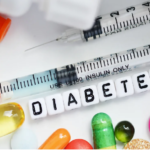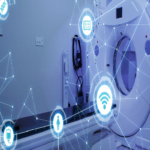As the Meaningful Use incentive program forges ahead, the tide has shifted for electronic health record (EHR) adoption in both acute care and outpatient settings. According to a recent CDC report, in 2013, 78 percent of office-based physicians used any type of EHR system, up from 18% in 2001.¹ More than 83 percent of hospitals are at Stage 3 or higher in electronic medical record (EMR) adoption, based on the Healthcare Information and Management Systems Society (HIMSS) EMR Adoption Model.² Those who have successfully navigated through “go live” have improved their efficiency in using the technology, and have likely learned some of the shortcuts to get around the system they are using.
One of the more common shortcuts is “copy and paste.” As reported in the September 2013 American Health Information Management Association (AHIMA) report, “74 to 90 percent of physicians use the copy/paste function in their EHRs, and between 20 to 78 percent of physician notes are copied text.” ³ Statistics like this beg the question if providers and nurses are actually listening to what a patient is saying and memorializing the conversation in a clearly unique note, or if they are just trying to get through their day efficiently, and using copy/paste computer functions to document what, to them, may sound like similar patient complaints and plans of care.
Risk managers shudder when they think about the potential fallout from this practice. First and foremost, the opportunities to negatively impact patient care and cause harm are increased. Copy and paste can contribute to incorrect or inaccurate information being relayed in the patient’s record or important information being left out. Information may not be updated with the most current data, information could be redundant, making it difficult to determine the patient’s current state, or there could be over-documentation because the note that was copied was not reviewed completely. Furthermore, risk managers must consider potential privacy breach – records of one patient may be cut into the records of another and then improperly disclosed in a medical record request.
For providers who work in more than one EHR system, some are able to copy information from one system (for example, the office practice EHR) into another system (such as the hospital EHR), which can leave the question of authorship up for grabs. When was the original entry actually made, and by whom? As noted by AHIMA, “In some settings, copy and paste may be acceptable for legal record purposes but not for others (clinical trials data, quality assurance data, pay-for performance data). In the hybrid environment, audit tracking of copy and paste may not be available because it involves different systems.”⁴
Beyond patient safety concerns, the Office of the Inspector General has noted copy and paste as one of the two most common documentation practices to commit fraud.⁵ Multiple encounters using the same documentation, as well as the potential for over-documentation previously mentioned, has the potential to create the appearance of support for billing higher level services with the irrelevant documentation that was brought forth from a record of another patient or another encounter of the same patient. This false documentation places an organization or individual provider at high risk for trouble.
What mitigation efforts should we consider? Realistically, turning copy and paste functionality “off” would be difficult in many organizations, and likely met with significant resistance. However, certain boundaries still must be set, with the creation of an approach that can be used to consistently manage clinical content, and outlining what is acceptable and what is not. In addition, limitations on copy and paste for legal record purposes may need to be outlined, such as for documentation in clinical trials data, and pay-for-performance data.⁶ A reliable chart audit function must be established and should contemplate an audit of a representative number of records by specialty and provider on a monthly basis; this could be centered around certain diagnoses or treatments, which is where copy and paste activity is typically found.
As we move toward achieving a fully electronic documentation system across the country – a goal of the Health Information Technology for Economic and Clinical Health (HITECH) Act of 2009 – we must continue to evaluate the impact of EHRs in the patient care environment, how this form of documentation may be affecting patient safety for the better and the worse, and continually work to make EHR technology a valuable tool in support of safe patient care.




































